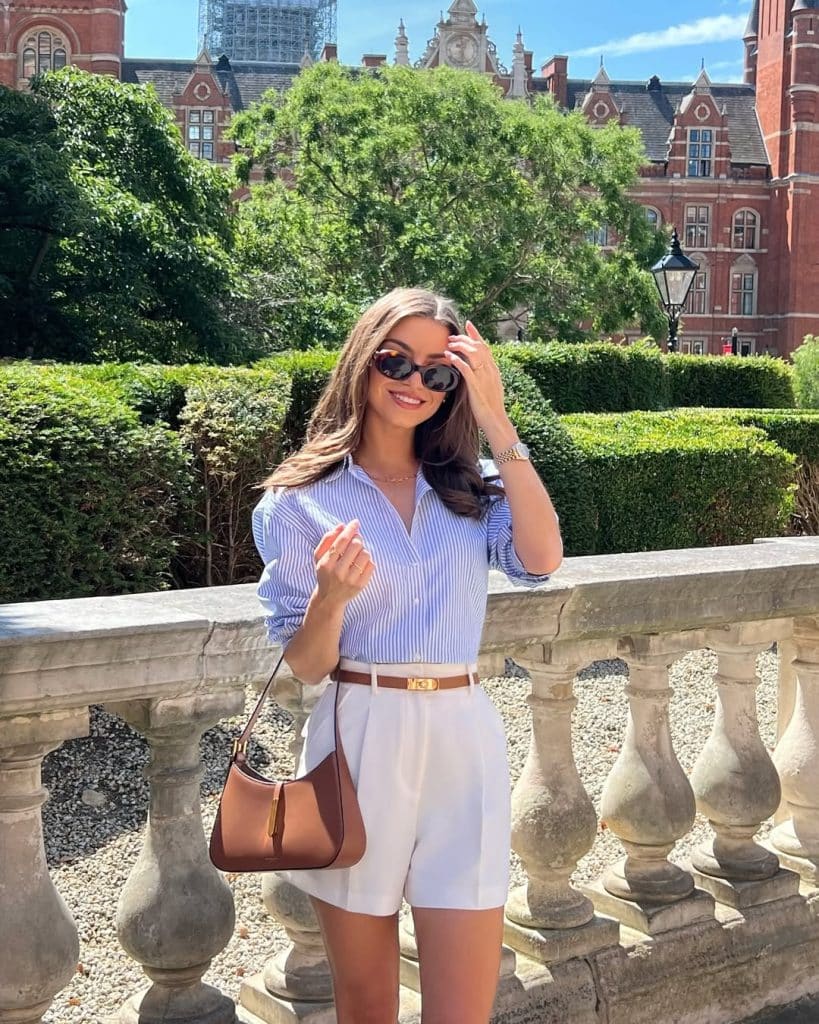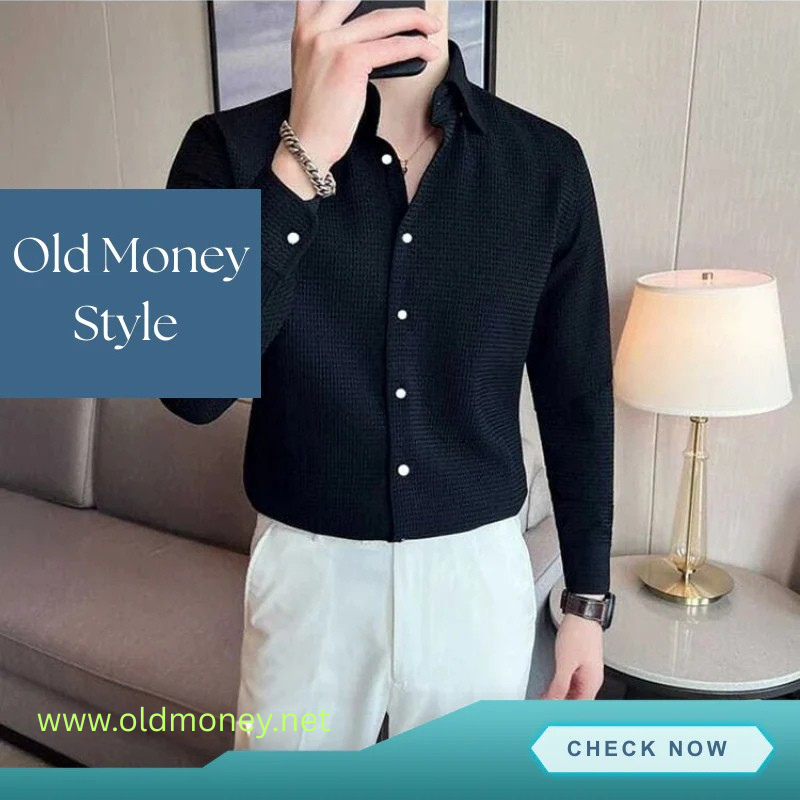
Old Money Style Guide 2025: How to Dress Rich
Old money style is not about displaying labels. It is about wearing quality pieces that last, fit well, and look effortless year after year. While social media trends burn bright and fade fast, old money wardrobes stay steady. They signal confidence, history, and taste—qualities that never go out of fashion.
This 2025 guide explains the pillars of old money dressing, details the fabrics and fits that matter, and shows how to build a closet that feels rich even if your bank account is still catching up. Follow the steps below, and you will project quiet luxury in the boardroom, on city streets, and at weekend gatherings.
1. Define the Core Values First
Before buying a single item, understand the mindset that drives old money style:
-
Quality over quantity
-
Timeless over trendy
-
Fit over flash
-
Maintenance over replacement
-
Discretion over display
Every purchase must serve those five rules. If a garment fails even one, skip it.
2. Build Around a Neutral Color Framework
Old money wardrobes center on restrained shades that pair well with everything:
|
Base Neutrals |
Accent Neutrals |
Heritage Accents |
|
Navy |
Light grey |
Burgundy |
|
Charcoal |
Cream |
Forest green |
|
Camel |
Stone |
Rust |
|
Chocolate |
Soft white |
Deep mustard |
The point is mix‑and‑match ease. A navy blazer, cream trousers, and chocolate loafers work in almost any setting. Start by collecting four tops, three bottoms, two shoes, and one coat in these tones. When in doubt, choose navy—it flatters every skin tone and hides minor wear.
3. Invest in Fabric, Not Logos
Old money fabrics age gracefully and feel good against skin. Focus on these:
-
Long‑staple cotton: For shirts, tees, and casual trousers. Breathable and strong.
-
Worsted or flannel wool: For suiting and winter trousers. Holds the crease.
-
Cashmere or merino: For knitwear. Insulates without bulk.
-
Linen (high thread count): For summer jackets and shirts. Wrinkles in style.
-
Full‑grain leather: For shoes, belts, and small goods. Develops a deep patina.
Avoid mixed synthetics unless they serve a performance need (e.g., a waterproof layer). Fabric labels should read like a short novel, not a science experiment.
4. Perfect the Fit—Tailors Are Non‑Negotiable
A flawless fit separates merely expensive clothes from truly rich‑looking ones. Key checkpoints:
-
Shoulders: The seam should sit at the edge of your shoulder bone.
-
Sleeves: Show 1 cm of shirt cuff under a jacket.
-
Trouser length: A slight break or no break at all; never bunching.
-
Waistline: Snug, not tight. You should slide two fingers into trousers.
-
Jacket waist: Tapers without pulling at the single button.
Buy off‑the‑rack if budget demands it, then allocate 10 percent of the purchase price for alterations. The difference is night and day.
5. Own Three Essential Shirts
Start with:
-
A crisp white Oxford.
-
A pale blue poplin.
-
A striped or subtle check pattern.
Rotate them, launder carefully, and press after each wash. When you are ready for heritage‑level quality, explore the refined options in our Shirts collection. One well‑made shirt beats five cheap ones every time.
6. Choose Trousers That Hold a Crease
Pleated or flat front, the goal is drape. Wool flannel works nine months of the year. Mid‑weight cotton twill covers warmer days. Skip skinny fits—they date fast and restrict movement.
For balanced proportions and reliable fabrics, study the cuts inside the Pants collection. Look for:
-
Rise that meets your natural waist.
-
Leg opening that covers the shoe tongue but never swamps it.
-
Inside leg lining in winter styles to stop knee shine.
7. Treat Shoes as Assets
Shoes ground your outfit—literally and figuratively. Old money footwear follows three rules:
-
Leather first, rubber soles only for rain.
-
Construction you can resolve: Goodyear welt or Blake stitch.
-
Regular maintenance: Brush, condition, and tree every pair.
Start with dark brown penny loafers, black cap‑toe Oxfords, and rugged derbies for casual looks. Keep them polished but not mirror‑shiny. When you are ready to upgrade, explore craftsmanship‑focused styles in the Old Money Shoe.
8. Knitwear: The Layer That Signals Luxury
A lightweight cashmere crewneck layers under a blazer in winter and pairs with chinos in spring. Merino roll‑necks replace a shirt on cold days and add texture under a coat. Stick to solid colors or a restrained Fair Isle pattern.
Care tips:
-
Fold, never hang.
-
Hand‑wash or dry‑clean sparingly.
-
De‑pill with a cashmere comb.
Quality knitwear can last a decade when treated right.
9. Outerwear: One Coat Beats Five Jackets
Choose a single‑breasted navy or camel wool overcoat. It goes over tailoring and elevates denim. For rain, a dark trench with removable liner covers three seasons. Down parkas have their place, but pick muted tones and minimal branding.
Make sure coat sleeves show a hint of jacket cuff—another small detail that speaks volumes.
10. Accessories—Understated and Useful
-
Belts: Match leather to shoe color. Keep buckles small.
-
Watch: Simple dial, leather strap, no diamonds.
-
Pocket square or silk scarf: Adds interest without screaming.
-
Sunglasses: Classic frames (Wayfarer, Clubmaster, aviator).
-
Jewelry: Limit to a signet ring or thin bracelet.
Every item should serve a function. If it doesn’t, leave it at home.
11. Grooming and Personal Presentation
Old money appearance extends beyond clothes:
-
Hair: Clean, neatly styled, no extreme fades or dyes.
-
Facial hair: Trimmed or clean‑shaven; patchy stubble looks careless.
-
Hands: Tidy nails, moisturized skin.
-
Fragrance: Subtle, not a cloud.
These habits are small but compound your overall polish.
12. Mind Your Manners—They Are Part of the Outfit
Etiquette never shows on a hanger but defines the old money aura:
-
Hold doors.
-
Speak in measured tones.
-
Listen more than you talk.
-
Write hand‑written thank‑you notes.
-
Arrive on time.
Behavior cements the impression your wardrobe begins.
13. Sustainability Through Longevity
Fast fashion drives landfill waste and carbon output. The Ellen MacArthur Foundation states that extending a garment’s life by nine months reduces its environmental impact by up to 30 percent. Old money methods—repair, resolve, and rotate—achieve exactly that.
Quality clothing costs more up front but less per wear. Track each item’s cost‑per‑wear; you will see value climb as years pass.
14. Quiet Luxury Trend vs. Old Money Reality
Fashion media now hypes “quiet luxury.” True old money style predates hashtags and remains steady after trends fade. According to Business of Fashion, quiet luxury is “less about price and more about restraint,” echoing principles long practiced by legacy families (BoF). The takeaway: do not chase today’s quiet‑luxury labels—focus on timeless construction and fit instead.
15. Shopping Strategy for 2025
-
Audit your closet: Remove items you haven’t worn in a year.
-
Fill critical gaps first: Maybe a coat that fits or shoes you can resole.
-
Set a monthly budget: Quality costs; plan ahead.
-
Study fabric labels: Seek natural fibers and reputable mills.
-
Use a tailor: Allocate funds for adjustments.
-
Choose muted over loud: If the color is bold, cut is classic and vice versa.
-
Check resale sites: High‑end pieces often appear gently used.
Patience beats impulse. You are building a wardrobe, not filling a cart.
16. Daily Maintenance Routine
-
End of day: Brush suits, hang on wooden hangers.
-
Weekly: Steam wrinkles, check for loose threads.
-
Monthly: Rotate shoe trees, condition leather, de‑pill knitwear.
-
Seasonal: Dry‑clean coats, store with cedar blocks, air out suits.
These small tasks preserve structure and color, keeping garments camera‑ready.
17. Travel Packing the Old Money Way
Pack light; carry versatile pieces:
-
Navy blazer
-
Grey flannel trousers
-
White and blue shirts
-
Brown loafers
-
Lightweight cashmere sweater
-
Pocket square to change the look
One carry‑on is enough for a week when everything coordinates.
18. Common Mistakes to Avoid
|
Mistake |
Why It Fails |
Fix |
|
Over‑logo items |
Signals insecurity |
Choose unbranded goods |
|
Poor shoe care |
Ruins entire look |
Polish weekly |
|
Ignoring proportions |
Looks sloppy |
Tailor hems and sleeves |
|
Chasing micro trends |
Ages wardrobe fast |
Stick to classics |
|
Synthetic shine |
Reads cheap |
Opt for natural fibers |
19. Example Capsule for 2025
|
Item |
Fabric |
Color |
|
Oxford shirt |
Long‑staple cotton |
White |
|
Poplin shirt |
Cotton |
Light blue |
|
Crewneck knit |
Cashmere |
Camel |
|
Unstructured blazer |
Wool hopsack |
Navy |
|
Pleated trousers |
Wool flannel |
Charcoal |
|
Chinos |
Cotton twill |
Stone |
|
Overcoat |
Wool‑cashmere |
Camel |
|
Penny loafers |
Full‑grain leather |
Brown |
|
Cap‑toe Oxfords |
Calf leather |
Black |
|
Silk scarf |
Silk twill |
Burgundy |
Ten pieces, dozens of outfits, zero trend anxiety.
20. Final Takeaway: Dress Rich by Thinking Long Term
Old money style is a disciplined practice, not a shopping spree. Start with fit, choose quality fabrics, maintain every item, and behave with quiet confidence. Over time, your wardrobe becomes a collection of allies that always work, never embarrass, and rarely need replacement.
Begin with one investment piece this season—perhaps a perfect navy blazer or a pair of full‑grain loafers. Wear it often, care for it properly, and watch it anchor your style for years to come. That is how to dress rich in 2025 and beyond—no shouting required.



